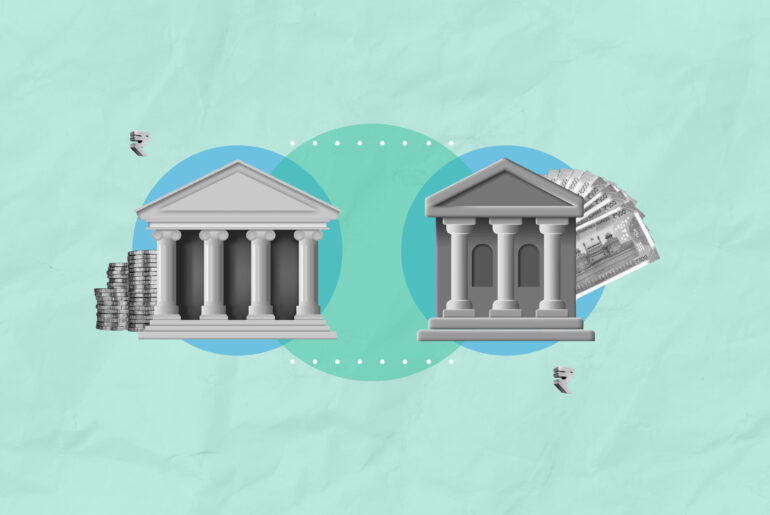Last Updated on Feb 13, 2023 by Anjali Chourasiya
“The central bank might go for an interest rate hike or might slow down the pace”.
The term above is one that we hear a lot these days, but as laypeople, we have a hard time understanding what it implies. Monetary policy may appear to be a complex and abstract topic, but it is critical in shaping the economy and our daily lives. In simple terms, monetary policy refers to the actions of central banks, such as the Reserve Bank of India, to control the money supply and influence interest rates. These actions can have a big impact on everything from the availability of loans for homes and businesses to the stability of the stock market.
In this article, we’ll try to break down the basics of monetary policy and explain how it affects us and the economy as a whole.
Table of Contents
Promoting price stability
To begin with, the primary goal of any country’s central bank is to promote price stability. The ability of an economy to keep prices largely stable through time is referred to as price stability. In other words, it indicates that an economy’s general price level is not rising or falling quickly. High inflation (fast price increases) or deflation (rapid price decreases) are seen to have detrimental consequences on an economy, such as lowering consumer purchasing power and creating uncertainty for businesses; hence this is regarded as a crucial macroeconomic goal.
To achieve this goal, central banks use various tools to influence the money supply and interest rates in the economy, and the three main tools are
- The Repo rate is the rate for banks to borrow funds from the Central bank. Making borrowing more or less expensive for banks, consumers, and businesses can affect the economy.
- Bank reserve requirements are the proportion of deposits that are kept in reserves and the rest that can be lent out. An increase in the central bank’s reserve requirement would result in a lower level of funds available for lending, raising the price of money (interest rate).
The minimum reserve requirement for banks in India during the past 2 yrs has climbed from 3.0% (March 2021, the lowest in the past 60 yrs) to 4.5% (as of December 2022).
- Open Market Operations (OMOs) refer to the central bank’s buying and selling of securities in the open market. When the central bank purchases securities, cash replaces the securities, causing a corresponding increase in funds in the market, increasing the money supply, and lowering interest rates (inverse relationship between both).
How can monetary policy impact the economy and our daily lives?
To give a better understanding, below are a few examples to understand how monetary policy can impact different aspects of the economy and our daily lives.
• Impact on interest rates: An increase in interest rates can make borrowing more expensive for individuals and businesses. This can lead to a decrease in consumer spending and a slowdown in business investment, which can negatively impact economic growth. Conversely, a decrease in interest rates can make borrowing cheaper, increase consumer spending and business investment, and stimulate economic growth.
• Impact on the housing market: Higher interest rates can make it more expensive for people to borrow money to buy a house, potentially leading to a decrease in the demand for housing and house prices. Lower interest rates can make it cheaper to borrow money to buy a house, increasing the demand for housing and house prices.
• Impact on the stock market: Monetary policy can also impact the stock market. Lowering interest rates can make it cheaper for companies to borrow money to invest in their business, boosting stock prices. Conversely, raising interest rates can make it more expensive for companies to borrow money, leading to a decrease in stock prices.
Use Tickertape Stock Screener to analyze a stock’s price and the total debt a company holds along with other key parameters like market cap, 1-yr returns, 5-yr CAGR, etc., to analyze a stock.
• Impact on exports: A contractionary monetary policy can lead to a stronger domestic currency, making exports more expensive for foreign buyers and hurting the country’s exports and trade balance. An expansionary monetary policy can lead to a weaker domestic currency, making exports cheaper for foreign buyers, which can boost the country’s exports and trade balance.
• Impact on consumer prices: Monetary policy can also impact consumer prices. For example, if the central bank raises interest rates to combat inflation, this can decrease consumer spending and consumer prices. Conversely, if the central bank lowers interest rates to stimulate economic growth, this can lead to an increase in consumer spending and an increase in consumer prices.
Types of monetary policy
Now to dig more, monetary policy can also be categorized into two types:
- Contractionary monetary policy – It is when the central bank raises interest rates or reduces the money supply to slow down economic growth and combat inflation. The idea behind this type of policy is that consumers and businesses will spend less by making borrowing more expensive and reducing the amount of money available. And the overall level of demand in the economy will decrease, leading to a reduction in inflation.
- Expansionary monetary policy – It is when the central bank lowers interest rates or increases the money supply to stimulate economic growth and combat deflation. The idea behind this type of policy is that by making borrowing cheaper and increasing the amount of money available, consumers and businesses will spend more, and the overall level of demand in the economy will increase, leading to an increase in economic activity and combating deflation.
However, it’s worth noting that the effectiveness of monetary policy can vary depending on the state of the economy, the level of public debt, the level of inflation, the level of interest rates, and the level of bank reserves. Additionally, the different types of monetary policy can have different effects on different sectors of the economy.
Drawbacks of monetary policy
Some potential drawbacks of monetary policy include:
• Lags in effect: Monetary policy actions can take time to impact the economy. For example, it may take several months for changes in interest rates to affect borrowing and spending.
This can make it difficult for central banks to respond quickly to changes in the economy.
• Limited effectiveness in certain economic circumstances: Monetary policy may be less effective during economic downturns, such as recessions. In such situations, interest rates may be close to zero, and central banks may be unable to lower them further to stimulate economic growth.
• Inflation targeting: Central banks often set inflation targets, but if they focus too much on achieving them, they may neglect other important economic goals such as economic growth and employment.
• Distributional effects: Monetary policy can have different effects on different groups of people, such as low-income households, the elderly, and small businesses. These groups may be more vulnerable to changes in interest rates and the money supply.
• Political pressure: Central banks are often under pressure from politicians and other groups to make monetary policy decisions that are in their best interest rather than what is best for the economy as a whole.
• Interdependence with fiscal policy: Monetary policy is just one tool that governments use to influence the economy. It must be used in conjunction with fiscal policy, which refers to government spending and taxation. If the government’s fiscal policy is not in line with the monetary policy, the overall impact on the economy may be less effective.
• Uncertainty: Monetary policy can be uncertain and difficult to predict. Central banks must base their decisions on forecasts and predictions, but these can be difficult to make with accuracy, especially in a rapidly changing economic environment.
• International spillovers: Monetary policy decisions made by one country can affect other countries through trade and financial flows, making coordinating monetary policy decisions among different countries difficult.
Conclusion
Monetary policy plays a crucial role in shaping the economy and the daily lives of individuals and businesses. It’s important to remember that monetary policy is a constantly evolving topic. There is an ongoing debate among economists about the best ways to use it to promote economic stability, growth and employment and ensure price stability.




